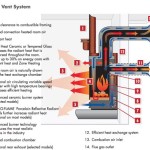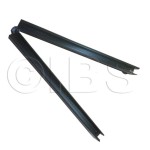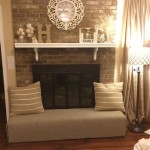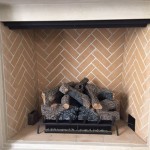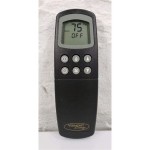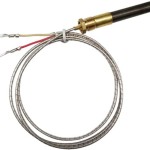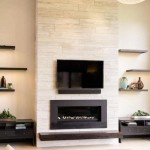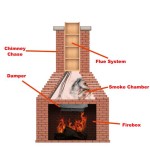Gas Fireplace Insert with Blower: A Vented Heating Solution
A gas fireplace insert offers a convenient and efficient method for upgrading an existing masonry or factory-built fireplace. These inserts are designed to fit directly into the opening of the fireplace, providing a controlled and cleaner-burning heat source compared to traditional wood-burning fires. When equipped with a blower and a venting system, a gas fireplace insert provides enhanced heating distribution and safe exhaust removal, improving overall performance and indoor air quality.
The primary function of a gas fireplace insert is to convert an open and often inefficient fireplace into a sealed and controllable heating appliance. This conversion usually involves disconnecting or bypassing the original damper and lining the existing chimney with a venting system specifically designed for gas appliances. The sealed combustion chamber prevents drafts and minimizes heat loss up the chimney, making the insert significantly more energy-efficient than an open fireplace.
Gas fireplace inserts utilize either natural gas or propane as fuel. The choice between these two fuels often depends on availability and cost in a particular region. Natural gas is typically supplied through a municipal pipeline, while propane is stored in tanks and delivered as needed. The insert is connected to the gas supply line, and a control valve regulates the flow of gas to the burner. Ignition is typically achieved through an electronic igniter or a pilot light.
The inclusion of a blower in a gas fireplace insert significantly enhances its heating capabilities. The blower, typically a fan located at the bottom or back of the insert, circulates air around the firebox and then blows the heated air into the room. This forced-air circulation distributes heat more evenly and effectively than relying solely on radiant heat from the firebox. The blower speed is often adjustable, allowing the user to customize the airflow and heat output to suit their comfort preferences.
Venting is a critical aspect of any gas fireplace insert installation. The venting system is responsible for safely removing combustion byproducts, such as carbon dioxide, water vapor, and trace amounts of other gases, from the home. Improper venting can lead to dangerous carbon monoxide buildup, posing a serious health risk. Consequently, certified professionals handle gas fireplace insert installations, ensuring adherence to local codes and manufacturer specifications.
Understanding the Components of a Vented Gas Fireplace Insert with Blower
A gas fireplace insert with a blower consists of several key components that work together to provide efficient and safe heating. These components include the firebox, burner, gas valve, igniter, blower, venting system, and control panel.
The firebox is the enclosure that houses the burner and provides the visual appearance of a fireplace. It is constructed from durable materials such as cast iron or steel and is designed to withstand high temperatures. The firebox may also feature a decorative facade, such as ceramic logs or glass embers, to create a realistic flame appearance.
The burner is the component where the gas is combusted to produce heat and flames. Burner designs vary, but they typically consist of a series of ports or jets through which the gas flows and is ignited. The burner’s design influences the flame pattern and heat output of the insert.
The gas valve regulates the flow of gas to the burner, controlling the flame intensity and heat output. It is typically controlled by a thermostat or a manual control knob. The gas valve also includes safety features that automatically shut off the gas supply if the flame is extinguished or if a gas leak is detected.
The igniter is responsible for initiating combustion of the gas. Electronic igniters use an electric spark to ignite the gas, while pilot lights use a small, continuously burning flame to ignite the gas. Electronic igniters are generally more energy-efficient, as they do not require a constant gas supply for the pilot light.
As mentioned earlier, the blower circulates heated air from the firebox into the room, enhancing heat distribution. Blower models vary in size and speed, and some offer adjustable settings to customize the airflow. The blower motor is typically powered by electricity.
The venting system is the pathway for safely removing combustion byproducts from the home. The venting system for gas fireplace inserts is typically either a direct vent or a B-vent system. Direct vent systems draw combustion air from outside the home and exhaust combustion gases directly outside through a sealed pipe. B-vent systems use the existing chimney to vent combustion gases, but require a relining process to ensure proper drafting and prevent corrosion.
The control panel provides the interface for operating the gas fireplace insert. It may include a thermostat, a flame height adjustment knob, a blower speed control, and an on/off switch. Some models also offer remote control functionality for added convenience.
Advantages of Gas Fireplace Inserts with Blowers and Vented Systems
Gas fireplace inserts with blowers and vented systems provide several advantages over traditional wood-burning fireplaces and vent-free gas fireplaces, including improved heating efficiency, enhanced safety, convenient operation, and reduced environmental impact.
Improved heating efficiency is achieved through the sealed combustion chamber and the forced-air circulation provided by the blower. The sealed chamber prevents heat loss up the chimney, while the blower distributes heat more evenly throughout the room. This results in significant energy savings compared to open fireplaces, where much of the heat is lost up the chimney.
Enhanced safety is ensured through the venting system, which safely removes combustion byproducts from the home. The risk of carbon monoxide poisoning is significantly reduced compared to vent-free gas fireplaces, which release combustion gases directly into the living space. Additionally, the sealed combustion chamber prevents sparks and embers from escaping, reducing the risk of fire.
Convenient operation is offered by the ease of use and control provided by gas fireplace inserts. With the push of a button or the turn of a knob, the fireplace can be ignited and adjusted to the desired heat output. There is no need to gather wood, start a fire, or clean up ashes. The thermostat control also allows for maintaining a consistent room temperature automatically.
Reduced environmental impact is achieved through the cleaner burning characteristics of gas compared to wood. Gas fireplace inserts produce fewer emissions of particulate matter and other pollutants than wood-burning fireplaces. This contributes to improved air quality both indoors and outdoors.
Selecting and Installing a Gas Fireplace Insert with Blower and Venting
Choosing the right gas fireplace insert and ensuring proper installation are crucial for maximizing performance, safety, and longevity. Several factors should be considered during the selection process, including the size and style of the existing fireplace, the desired heat output, the available fuel source, and the venting requirements.
The size of the fireplace opening is a primary constraint in selecting an insert. The insert must be sized to fit snugly within the existing fireplace opening, with allowance for proper clearances and venting connections. Measuring the width, height, and depth of the fireplace opening accurately is essential.
The desired heat output should be matched to the size of the room being heated. Gas fireplace inserts are rated in British Thermal Units (BTUs), which indicate the amount of heat they can produce per hour. A larger room will require a higher BTU rating to maintain comfortable temperatures.
The available fuel source, either natural gas or propane, will determine the type of insert that can be used. Inserts are designed to operate with a specific fuel type, and converting between fuel types may require modifications to the gas valve and burner.
The venting requirements will depend on the type of chimney system that is already in place. Direct vent systems require a dedicated vent pipe that runs directly to the outside of the home, while B-vent systems utilize the existing chimney, but require a relining with a vent liner approved for gas appliances. Local building codes and manufacturer instructions will dictate the appropriate venting method.
Once an insert has been selected, professional installation is highly recommended. Certified gas fireplace installers have the training and experience to ensure that the insert is installed safely and correctly. This includes proper connection to the gas supply, venting system, and electrical wiring. They will also perform a thorough inspection to verify that the insert is operating properly and that all safety features are functioning as intended.
The installation process typically involves several steps. First, the existing fireplace is cleaned and inspected for any damage or obstructions. The damper is either removed or sealed off. Next, the venting system is installed or relined, ensuring proper connection to the insert. The gas line is connected to the insert, and a leak test is performed to verify that there are no gas leaks. The electrical wiring is connected to power the blower and igniter. Finally, the insert is placed into the fireplace opening and secured in place. A final inspection is performed to ensure that all components are functioning correctly and that the area around the fireplace is clear of combustible materials.

30 Ruby Contemporary Intellifire Touch Direct Vent Fireplace Insert Blower And Remote Electronic Ignition Majestic

35 Ruby Traditional Intellifire Touch Direct Vent Fireplace Insert Blower And Remote Electronic Ignition Majestic

Majestic 30 Inch Ruby Direct Vent Gas Fireplace Insert With Blower

25 Ruby Traditional Intellifire Touch Direct Vent Fireplace Insert Blower And Remote Electronic Ignition Majestic

Majestic 35 Inch Ruby Direct Vent Gas Fireplace Insert

Rushmore 30 Direct Vent Fireplace Insert Fine S Gas

Monessen Direct Vent Gas Fireplace Insert Reveal

Oakville Gdix4 Direct Vent Gas Fireplace Inset By Napoleon

Victory Direct Vent Gas Insert By Vermont Castings

Kingsman 33 Inch Direct Vent Gas Fireplace Insert
Related Posts

